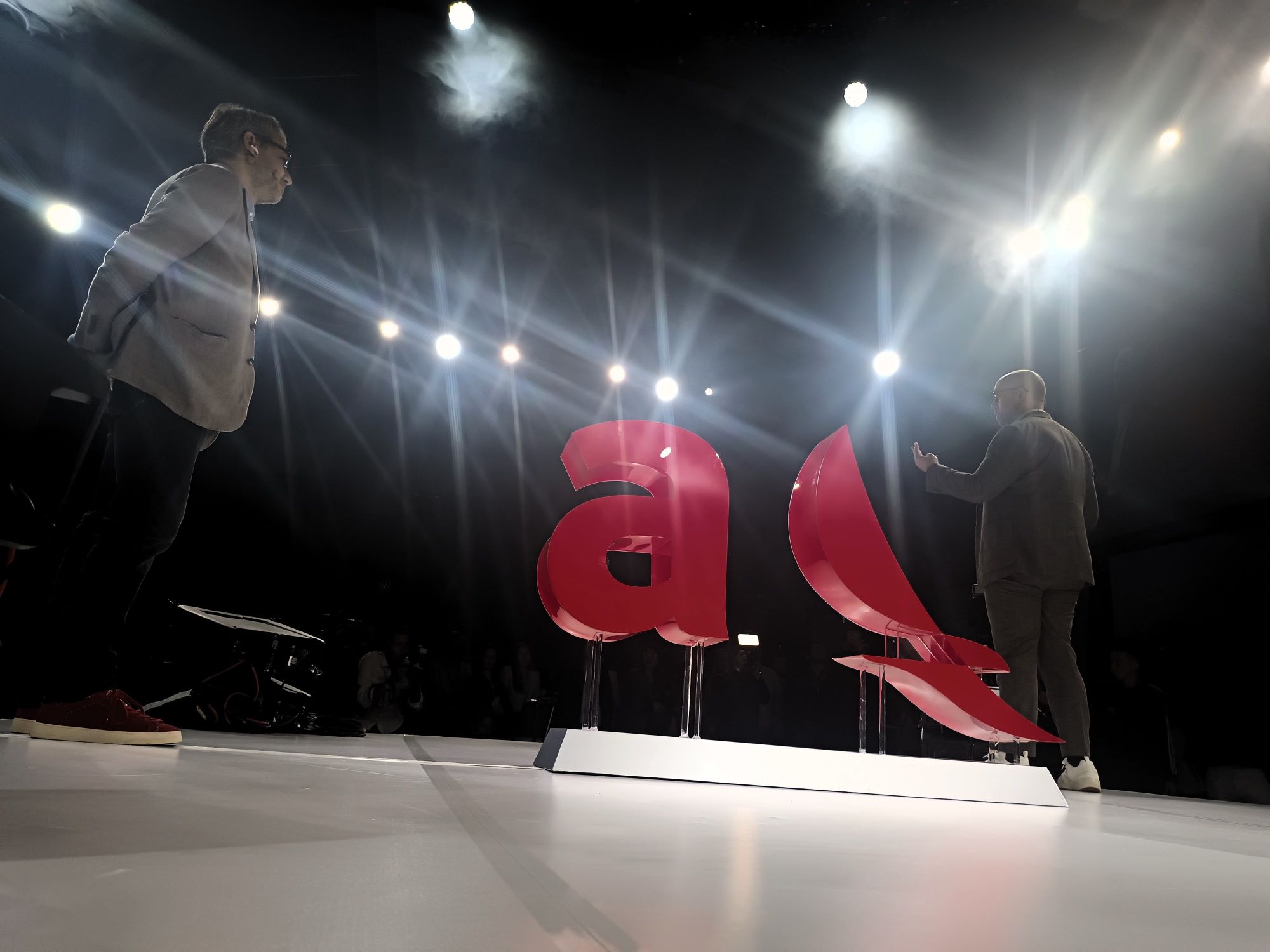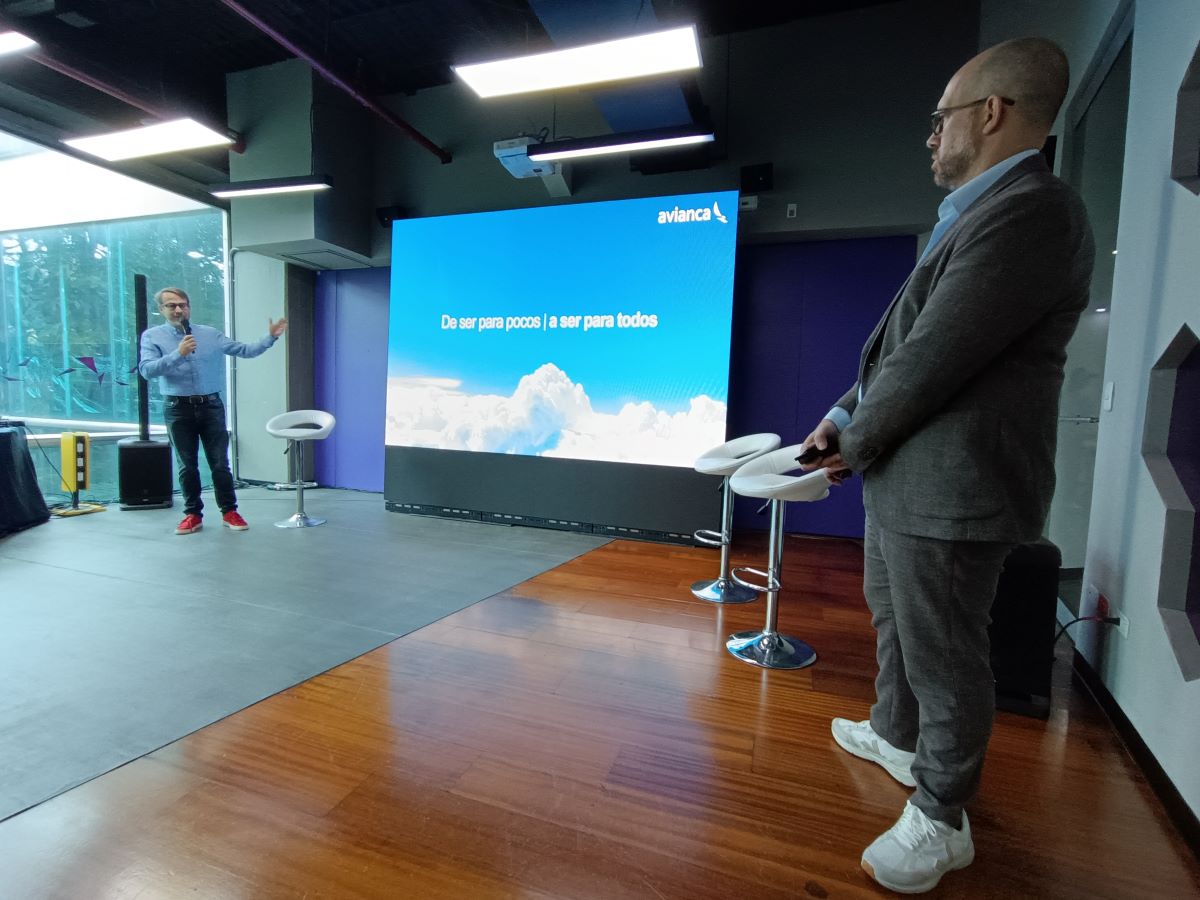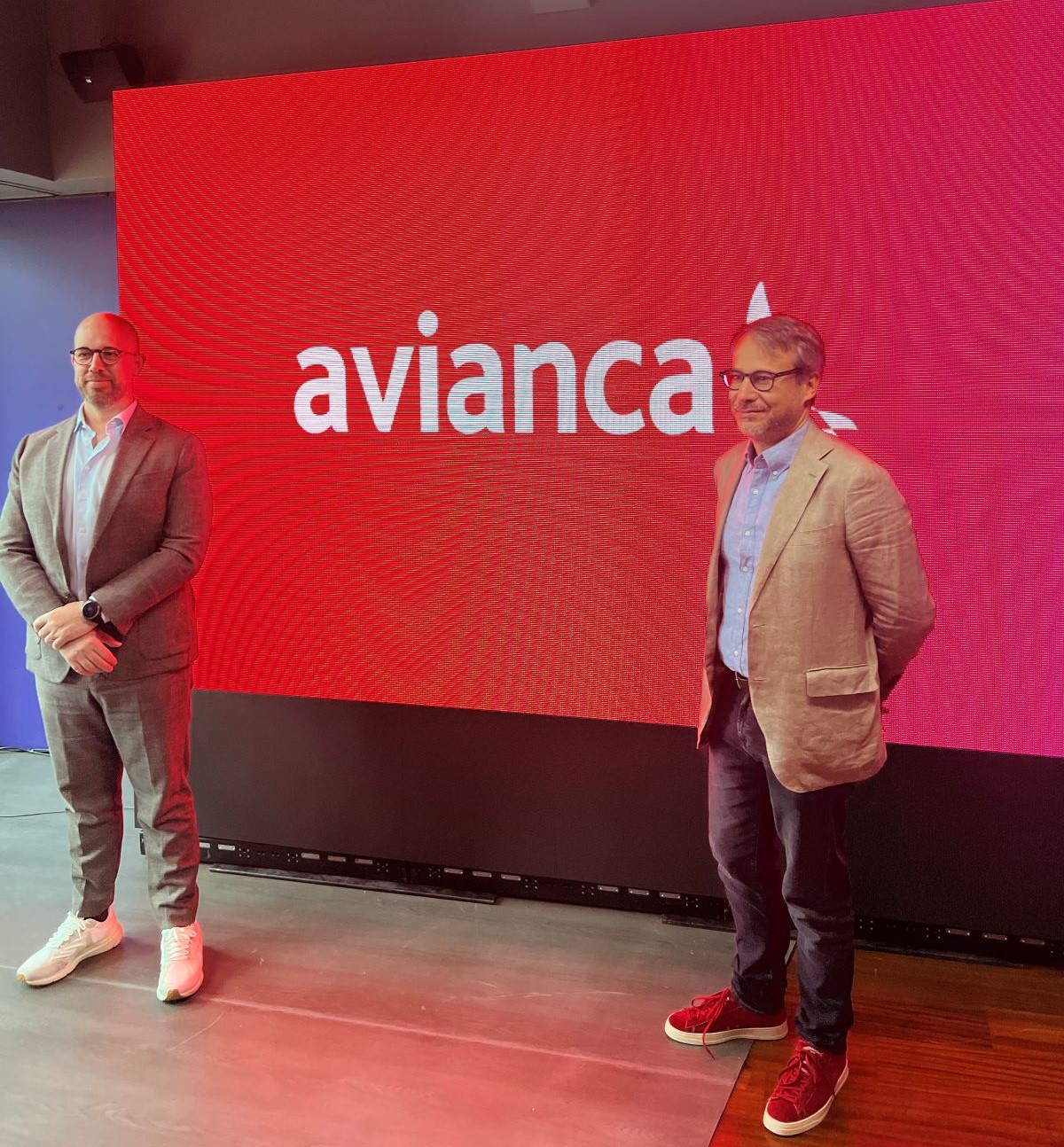From Capital to lowercase: avianca rebrands and celebrates its reinvention
«Lufthansa thinks a low-fare airline is a plane with the name in lowercase.»
Michael O’Leary, 2014.
Pictures had already leaked – in the digital age, it’s increasingly hard to keep a secret – of a plane with a modified livery. The night before, an event had taken place confirming the rumors and the expected communication campaign: the rebranding was removing Avianca’s uppercase A, replacing it with a lowercase a. Avianca becomes avianca.
When it was confirmed at the October 18th event, the quote from Ryanair’s CEO came to mind: usually, O’Leary is right. Few know commercial aviation like he does, and during the rebranding presentation, his statement was recalled, followed by two predictions that turned out accurate: germanwings and airberlin were doomed to fail. In 2020 and 2017 respectively, he was proven right.
So, the self-formulating question is: what is avianca trying to convey when it stops being Avianca? Because beyond the lowercase, there’s a story of survival and reinvention.
The risk of a legacy becoming an anchor
Adrián Neuhauser, Deputy CEO of avianca, pulls no punches: «We were on the brink of disappearing, of losing our livelihood. We had to change the way we fly. We started thinking about how to rebuild. An airline that, while preserving the best of our legacy, recognized what the modern world demanded.»
«Today we move more passengers than ever, connect more regions than ever, and are more punctual. Our fleet is more consistent, simpler. We have healthy finances, a balance that allows us to invest in our employees and fleet. Despite rising fuel prices, inflation, and challenging exchange rates, we manage to maintain fair prices, in contrast to the significant increases by our competitors.»
«Indeed, we changed the seat configuration. We changed the onboard service, the check-in process, and baggage handling. This might be the biggest reinvention of an airline in aviation history. We know there were many changes in a short time. It wasn’t easy. But today, we can say the sky belongs to everyone.»

Frederico Pedreira speaks next, outlining the company’s near-future plans: 100 new planes, more twin-aisle aircraft, more passengers. More planes for avianca Cargo, allowing the replacement of the Airbus A300 and Boeing 767 for the Mexican subsidiary. He talks about Mexico and the AIFA, about Honduras, about Argentina, and the bilateral limitations currently imposing capacity constraints.
Neuhauser and Pedreira discuss the company’s significant changes post-pandemic. They detail the success of a strategy born out of necessity. As the press conference progresses, following the main event, a truth that everyone sees coming begins to accumulate.

It’s been mentioned quietly, but now it’s time to state it openly: Avianca was a legacy carrier with a business model that couldn’t survive in the industry’s current state. avianca is a Low Cost company that can, and there’s no shame in admitting it. For Avianca, Low Cost was a dirty word; for avianca, it’s a way of life.
Moving beyond the debate: avianca is a Low Cost Carrier
«Our commitment to users is to be transparent about what we offer and why. The product that Avianca previously offered couldn’t be financed. This was well-known; the financial results were public, and the company lost money with every operation. Simply put, users weren’t willing to pay for that product’s costs.»
«This is the product we’re willing to offer, one we believe is worth its cost. We’re proud of it, and the key for us is no surprises. Users can choose whether to travel with us or another airline – that’s the beauty of competition.»
«Our duty is to provide a product that’s reliable, safe, transparent, comfortable – we consider it comfortable, though that can be open to debate- and economically viable for the countries in which we operate.»

«The rebranding aims to get people to look at us again, to understand what we’re doing, to see it clearly, and make informed decisions. The change we made is similar to many global airlines: our configuration isn’t much different from IAG or LATAM in their reconfigured narrowbodies. The truth is, we were late to this reality, but it’s our reality now.»
«The main competitor for avianca isn’t other airlines. People don’t compare us with LATAM or JetSMART; they compare us with an Avianca that no longer exists,» Pedreira adds. «Many of our passengers only flew with [the old] Avianca. They compare us to a bygone world and aviation industry.» «Which is unaffordable,» chimes in Neuhauser.
«We must acknowledge that while profit isn’t everything – and we’d agree with that – businesses still need to be self-sustaining. We must be competitive and take responsibility for the history and traditions we inherit. We need to educate and take charge of the story and customs.»
A versus a: the challenge of changing a brand without changing the brand
The lingering questions, which we might not have answers to in the near future, are how effective will the rebranding be in telling this story? Is merely toggling the Caps Lock in communications, signage, and uniforms enough? Will it benefit the product, the company, the employees? No one knows.
I’m left to assume that skilled teams found this solution for an incredibly complex challenge: to convey that a 104-year-old airline remains relevant but isn’t the same company from 104 years ago. It both is and isn’t. You get what I mean.
In 2014, O’Leary commented that using lowercase tends to mask an unviable business model behind a supposed low-fare philosophy. Low fare isn’t just a font size; it’s an entirely different mindset. Avianca’s transformation into avianca seeks to portray exactly that.
Does this exempt avianca from all risks? In an industry as dynamic as aviation, and in a market as unique as ours, absolutely not. But the feeling is that the fundamentals are in place. Execution will be the final judge.

A new certainty that emerges from this day firmly lodges in my mind: just like its corporate image, Colombia’s main airline has changed, and that change is far deeper than the difference between A and a. And, just like with the rebranding, some may like it more, and others less. What remains is to get used to it.

/https://aviacionlinecdn.eleco.com.ar/media/2023/10/IMG_2052.jpg)
Para comentar, debés estar registradoPor favor, iniciá sesión